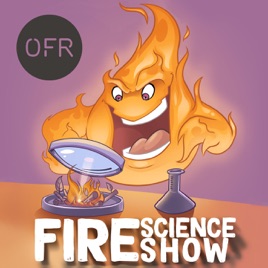
Advertise on podcast: Fire Science Show
Rating
4.7 from
Country
This podcast has
147 episodes
Language
Publisher
Explicit
No
Date created
2021/05/24
Average duration
51 min.
Release period
8 days
Description
Fire Science Show is connecting fire researchers and practitioners with a society of fire engineers, firefighters, architects, designers and all others, who are genuinely interested in creating a fire-safe future. Through interviews with a diverse group of experts, we present the history of our field as well as the most novel advancements. We hope the Fire Science Show becomes your weekly source of fire science knowledge and entertainment. Produced in partnership with the Diamond Sponsor of the show - OFR Consultants
Podcast episodes
Check latest episodes from Fire Science Show podcast
140 - Development and implementation of the SBI test with Rudolf van Mierlo
2024/02/21
Tests in the world of reaction to fire are supposed to be representations of real fire scenarios, allowing us to grasp the characteristics of building products against them. While for the worst scenario (flashover fire) or the smallest ignition source (small flame), the definition is pretty straightforward. However, creating the intermediate method that the entire Europe would agree on was a bumpy ride. Our latest episode is a treasure trove of knowledge detailing the birth and maturation of the Single Burning Item (SBI, EN 13823 ) test standard. With the CEN SBI group Convenor - Rudolf van Mierlo, we discuss the history and background of the standard, the background for some not-so-easy technical decisions and perhaps even tougher political ones.
In a project of this magnitude, everything matters - how do you ensure the method is reproducible and repeatable? How do you convey the exact amount of information in the technical standard? Will one of the measures eventually be the one that defines the final classification, and what does the classification reflect?
Towards the end of the episode, we try to put those lessons from the creation and implementation of SBI into brainstorming a pathway for a new intermediate test we really need. An intermediate testing method for facades, as an effort for the Dutch government and a likely update to the existing ISO standard.
Link to the conference we have discussed: https://dgmr.nl/en/sign-up-for-dgmr-conference-fire-safety-in-an-sustainable-future/
Reading material:
- The Rise of Euroclass by Angus Law et al. - a more detailed description of the politics behind the standard
- The Single Burning Item (SBI) Test Method - A Decade of Development and Plans for the Near Future by Rudolf van Mierlo and Bart Sette
- KRESNIK: A top-down, statistical approach to understand the fire performance of building facades using standard test data by Matt Bonner et al. - a more detailed description of how the Polish method handles different facades
Also, if you enjoyed this episode, you will like this one too: https://www.firescienceshow.com/089-designing-law-by-disasters-or-not-with-birgitte-messerschmidt/
Cover image - Effectis press release on changes to the SBI standard in 2020 - also a valuable source to see how the standard is evolving.
more
139 - Wind and Fire Interactions for Safer Open Car Park Design
2024/02/13
I've finished my first large research grant! I guess that makes me a 'real' scientist now. Came here today to share some most interesting aspects of this project with you. Not going to bore you all about the wind and fire interaction physics (hey, there is an entire episode 50 devoted to that!), but rather talk about challenges and stuff that perhaps will matter if you would like to engineer a case similar to one we have studied.
So in this podcast episode, we will go into:
How our framework for wind and fire coupled modelling worked out in practice (read more about the framework here Wind and Fire Coupled Modelling part 1 - Literature Review and here Wind and Fire Coupled Modelling part 2 - Best Practice Guidelines )How we had to go miles to modify the ABL profile so our wind predictions at the location of the fire are spot on A bit on design fire choice, but plenty more in here: 135 - Contemplating a design fire for car parksAnd most importantly, how we handled the mass amount of data generated in 336 CFD simulations within the project. Our unique approach to statistics, indexing and risk.The promised webinars will be uploaded soon, and you will find the link here.
Badania przedstawione w odcinku podcastu przeprowadzono w projekcie realizowanym an podstawie umowy UMO-2020/37/B/ST8/03839 do projektu badawczego nr 2020/37/B/ST8/03839 pt. Skutki oddziaływania wiatru na pożary budynków w wieloparametrycznej ocenie ryzyka z wykorzystaniem metod numerycznych.
Grafika autorstwa P. Jamińska-Gadomska (ITB) oraz P. Prusiński (NCBJ) w ramach współracy pomiedzy ITB a NCBJ w projekcie EuroCC (No 951732)
more
138 - Getting ready for the Wildfires in Northern Europe with Nieves Fernandez-Anez
2024/01/30
It is interesting to see changes in our profession that happen directly in front of our lives. Climate change and in consequence the changes in the wildfire patterns are one such obvious shift. In Poland, we do not ever have a ‘wildfire’ season, and I was kind of surprised when I discovered this is a thing in the South or in other parts of the world. Unfortunately, we do not have it *yet*. Some years ago devastating wildfire season happened in Sweden. There has been an emergency in northern parts of Russia as well. The summers are more dry – I thought that this is the driver of challenge, however, as with almost everything in fire science, the answer is more complicated.
I have invited Nieves Fernandez-Anez from Western Norway University of Applied Sciences to discuss what is the ‘north’ doing to get ready for the coming threat. Nieves told me we do not need to reinvent the wheel – a lot of solutions, methods, approaches and policies do already exist. However, the wheel has also not been tested on all roads… Some things that can work in Spain or Greece won’t ever be feasible in the Scandinavia. Cultural and societal differences must be understood and accounted for when transposing solutions. The same comes to our models – they need to account for local vegetation, and its growth patterns. A challenge in itself, as we need a rapid increase in the amount and quality of information we have at hand.
I was a bit naïve coming to the episode, and the issue seems significantly more complicated. This is obviously an issue that a single researcher won’t handle. But here, another reason why I have invited Nieves. She is one of researchers who really get a lot out of collaborations in the COST network. Previously in COST Action Fire Links and now in the COST action on extreme wildfires. These networks connect scientists from different backgrounds and different regions, to create a thriving environment for knowledge exchange and crafting new ideas that respond to the new problems.
If you would like to learn more about changes in wildfires in Europe, refer to this paper.
COST Action Fire Links
COST Action european Network on Extreme fiRe behaviOr (NERO) (just started and open!)
Cover image - picture of wildfires near Ljusdal in Sweden, 2018, NASA Earth Observatory images by Lauren Dauphin and Joshua Stevens, using MODIS data from LANCE/EOSDIS Rapid Response and the Level 1; after Wikipedia: https://pl.wikipedia.org/wiki/Po%C5%BCary_las%C3%B3w_w_Szwecji_(2018)
more
137 - e-mobility fires with Adam Barowy
2024/01/23
This episode of the Fire Science Show welcomes once again Adam Barowy from the Fire Safety Research Institute to shed light on the pressing issue of fire hazards in electric mobility devices.
In this episode, we give a follow-up to ep. 085 with Adam, which was published one year ago. One year in the world of e-mobility is a lot of time, so we have a lot of catching up to do!
We tackle the complexities of standardizing explosion protection for large-scale energy storage and the implications of toxic smoke on human health. We delve into real-world case studies that underscore the urgency of our quest for safer battery usage and regulation. We also discuss the aftermath of an electric scooter fire on the Toronto subway, unravelling the potential danger these incidents pose in congested spaces and the evolving role of safety standards and research in keeping our communities safe. As we also discuss the role of certifications like UL 2272 and the promise of new standards such as UL 1487, join us in this episode to equip yourself with the knowledge to navigate an electrified world responsibly.
I promised Adam to plug in the https://batteryfiresafety.org/ - a public campaign focused on spreading knowledge in the safe use of batteries.
Photo credit - a still frame from FSRI excellent video at https://batteryfiresafety.org/
more
136 - Fire Fundamentals pt 6 - The fire automation in a building
2024/01/17
In this episode of Fire Fundamentals, we dive into the life-saving choreography of fire detection and building automation systems that must work together in case of a fire. We discuss the roles and challenges related to:
fire detection and signalling;control panels and fire scenarios;smoke control and compartmentalization;power and water supply and management.We also discuss the sources of potential delays in device operation, and how some of those are consciously built into the system as a means for false alarm mitigation.
more
135 - Contemplating a design fire for car parks
2024/01/09
In episode 48, my guest Mike Spearpoint said that in mid '90s, he participated in experiments on vehicle fires, as at that time, there were doubts if the design fires of that time (developed in the '80s) were representative of modern cars. Fast forward 30 years ahead, and we seem to be in a very similar situation. We have limited knowledge on vehicle fires, most coming from very old studies that have used even older vehicles... And we have a fleet that consists of larger vehicles, gravitating to alternative fuels and batteries. We urgently need a new design fire, and in my opinion not just that - we need a new design fire paradigm for the car parks.
In this episode, I'm explaining the struggles we had choosing a design fire for our NCN OPUS grant on the multiparametric study of fire risk in wind conditions financed by the National Centre of Science in Poland. We have went through the literature, and looked through all of the available data, to figure out some data points we could implement in our studies.
In the episode, I will share those data points (and you may refer to a paper which I will link as soon as it is published), but also cover my ideas related to:
how do we carry out experiments on vehicles, and how does the experimental setup change the outcome;what is the design fire, and why do we need one?what are the goals of our design and why design fire should start with the goals in mind.The design fire is not a representation of a real fire. It is a test scenario that allows us to carry useful engineering judgement. This episode is all about this idea, and how I am making sure that my current assumptions reflect the changes in the modern car fleet. Enjoy!
Some additional resources:
Mohd Tohir's PhD thesis that gives the best overview of data up to 2014Our paper from 2014 which explains some assumptions for the car park smoke control design and summarizes experiments (in Polish)Badania przedstawione w odcinku podcastu przeprowadzono w projekcie realizowanym an podstawie umowy UMO-2020/37/B/ST8/03839 do projektu badawczego nr 2020/37/B/ST8/03839 pt. Skutki oddziaływania wiatru na pożary budynków w wieloparametrycznej ocenie ryzyka z wykorzystaniem metod numerycznych.
more
134 - Fire Fundamentals pt 5 - The Evacuation Equation with David Purser
2024/01/03
It's time to learn about "the evacuation equation" from one of its creators. This week I interview prof. David Purser about the elements that go into the evacuation process that help us determine the fire safety of buildings. We go through the components of the Required Safe Evacuation Time (RSET) one by one:
detection timealarm timepre-movementoccupant movement and congestion.We discuss how those were initially defined, what the assumptions behind establishing them as a part of the framework were, and what engineering scenarios they responded to. Prof. Purser explains the similarity behind the "human behaviour scenario" and the "design fire scenario" as both being inaccurate descriptions of the real world but valuable for design.
We also discuss cases in which those simple assumptions perhaps did not hold, such as the complex case of the Grenfell Tower evacuation. We confront the harrowing reality of communication breakdowns and delayed responses, dissecting how they can dramatically alter the outcome of an emergency. This highlights that the methodology is not "ultimate" and it is up to the engineer to understand the complexities of the process and the weak aspects of it.
The method described in this episode forms the core of PD 7974-6:2019 Application of fire safety engineering principles to the design of buildings - Human factors. Life safety strategies. Occupant evacuation, behaviour and condition (Sub-system 6). The method has been implemented in many local codes throughout the world and can today be considered a standard approach in the fire-safe design of buildings.
In the episode, prof Purser mentioned "new data" on pre-evacuation time. In his IAFSS lecture, he mentioned some sources, including this paper by Lovreglio et al.
Cover image based on a figure presented in paper 10.3390/buildings13123038
more
QA6 - Reflecting on 2023 and Igniting the Future
2023/12/27
As we close the curtains on 2023, take a walk with me through the unforgettable milestones that have shaped the Fire Science Show. This isn't just a recap; it's a treasure trove of insights and a roadmap to the innovations just over the horizon. We've come so far together, with download numbers soaring and our influence deepening within the fire science community. My gratitude overflows for the steady support from OFR Consultants in 2023, and the future looks very bright with this collaboration continuing into 2024.
I wish you a great 2024!
Oh. The three big things.
The two of them, you can access right now.
Reach the Book of Fire (newsletter signup)
Access the Fire Science Show community at Circle (and reach the Book of Fire there directly!)
And the third one, investigation fire science specials, you will be able to enjoy around Q2 2024!
more
133: Managing EV Fires at Sea with Elena Funk and Magnus Arvidson
2023/12/19
Welcome aboard a journey through the challenges of managing electric vehicle fires at sea with Elena Funk of DBI and Magnus Arvidson from RISE. In this podcast episode, we discuss two large projects devoted to understanding how we can mitigate, suppress and manage EV fires - project Elbas at DBI and project Lash Fire at RISE. Even though the aim of those were ferries and ro-ro ships, the findings are very important and relevant for civil infrastructure like car parks or tunnels.
In the episode, we discuss following technologies:
- fire blankets
- punctuating and injection devices
- water curtains
- low pressure water mist
- drenched systems.
As you can see, we cover a large group of technical solutions used to mitigate and suppress fires. In the episode, you will learn about the challenges related to each of them. We also go into general observations done during the test, also related to the growth and reignition of the fires.
If you would like to learn more, you need to go to the project websites:
ELBAS project at DBI
Lashfire project at RISE
If you want to find Elena's webinar, you can do it here: https://www.linkedin.com/posts/ms-hansen_firesafety-evparkinggarages-webinar-activity-7134936860115525632-mETf
And also, Elena told me after the recording:
One important aspect of fire extinguishment I did not mention on the podcast yesterday is water toxicity after extinguishment.
RISE, Jonna and colleagues have shown that when the water is applied directly on the battery you get increase in release of certain elements (e.g. PFAS).
https://pubs.acs.org/doi/10.1021/acs.est.2c08581
I think this is a very important observation, and I need to an entire episode on that.
Cover photo credit: DBI project ELBAS, DBI-ELBAS-FIXFU21008
more
132 - Dis-abling buildings - fire safety features from wheelchair user perspective with Mary Button
2023/12/12
This is an important episode. Our guest for today, UK fire engineer Mary Button, who uses a wheelchair herself, shares some of her own stories and feelings describing the reality for many disabled individuals. Drawing from her own experiences, Mary shares invaluable insights into the cognitive complexities individuals with mobility issues face, physical barriers, and psychological burdens related to the fire evacuation process. But most importantly, I think we touch on the essence here of how the building features disable people and how a shift in your mindset can help you design a more human-friendly (in consequence, people with disability-friendly) environment.
As we venture deeper into this enlightening conversation, we uncover the role of accessible building design in fire safety. Learn how technical aspects such as ramps, door widths, and pressurization systems can make a difference in ensuring safe evacuation. We also question the reliance on evacuation lifts and trained personnel, emphasizing the need for more independent and equal access solutions.
By the end of this episode, you’ll have a broader understanding of the importance of inclusive fire safety planning and strategies and the need for greater awareness and empathy towards individuals with disabilities.
Mary was also very kind to send me some materials. Here they are with her short comment:
The post below discusses why giving a number of potentially disabled people in the population is complicated but also provides a figure from the WHO. I've also linked to the UK government report, which links to statistics on disability prevalence by type in the UK population. Hopefully, these are useful starting points. I've also linked to Erik's Egress Enabler Tool and the accompanying paper.
https://www.disabilitydebrief.org/debrief/how-many-disabled-people/https://www.gov.uk/government/statistics/family-resources-survey-financial-year-2021-to-2022https://zenodo.org/records/7075501#.Y5x-9OzP0bmhttps://pubmed.ncbi.nlm.nih.gov/36372652/
more
131 - Experiments that changed fire science pt. 8 - Modelling Cardington Fire Tests with Asif Usmani
2023/12/06
In this part 8 of Experiments that changed fire science series we revisit Cardington (previously covered in part 2 - https://www.firescienceshow.com/078-experiments-that-changed-fire-science-pt-2-bre-cardington-with-tom-lennon/), but this time from the perspective of modeling the structure. My guest prof. Asif Usmani of the HK PolyU takes us on how simplifying the model led them to some fundamental discoveries on the thermo-mechanical response of structures to fires.
We discuss material properties and perhaps their overestimated role in structural modelling. We go into membrane actions and the role of restraints in shaping the response of beams and slabs to thermal loads. And Asif explains to me what this means at a scale of a building frame. Some truly remarkable insights - things that today are perhaps obvious to any structural engineer, but at that time were an unknown fire behaviour.
Here are some links to the papers related to today's episode:
Cardington
https://www.sciencedirect.com/science/article/pii/S0379711201000376
https://www.sciencedirect.com/science/article/pii/S0143974X01000049
https://www.sciencedirect.com/science/article/pii/S0379711204000116
WTC
https://era.ed.ac.uk/handle/1842/1562
OpenSees
https://link.springer.com/article/10.1007/s10694-021-01184-0
https://www.researchgate.net/profile/Xu-Dai-4/publication/283796522_OpenSees-based_integrated_tool_for_modelling_structures_in_fire/links/5647a6b108ae451880ac4f18/OpenSees-based-integrated-tool-for-modelling-structures-in-fire.pdf
Picture credit: British Steel, after "Newman G, Robinson JT and Bailey CG, Fire safe design: A new approach to multi-storey steel-framed buildings, The Steel Construction Institute, Berkshire, 2006"
Accessed through: https://www.researchgate.net/publication/303531122_Shear_panel_component_in_the_vicinity_of_beam-column_connections_in_fire [accessed Dec 06 2023].
more
130 - Mass timber fire dynamics with Dr. Carmen Górska
2023/11/29
In this episode, I am joined by Dr. Carmen Górska from OFR Consultants, the recent IAFSS Phillip Thomas Award recipient for the best paper at the previous IAFSS Symposium. In this interview, we touch on preconceived notions about fire dynamics in timber compartments, and Carmen explains how she has learned the intricate physics behind it.
The research discussed covers dozens of medium-scale timber (CLT) compartments with different amounts of exposed timber. The findings relate to the conditions inside (temperatures, heat fluxes), the spatial distribution of the temperature and oxygen within the compartment, charring rates, self-extinction conditions, and external venting fires.
If you would like to learn more from Carmen, here is her TEDx talk on mass timber, where she explains WHY we need research like this: https://www.youtube.com/watch?v=sKXnKRD2EU4&t=1s
And here is the award-winning paper: https://www.scopus.com/record/display.uri?eid=2-s2.0-85084762058&origin=resultslist
And here is Carmens' PhD Thesis, which goes much deeper into the topic: https://espace.library.uq.edu.au/data/UQ_ec263ab/s4408332_final_thesis.pdf
more
Podcast reviews
Read Fire Science Show podcast reviews
SteppDavid
2022/09/18
Firefighter
Enjoy listening to the professional guests and how they think.
Firefighter602
2022/06/16
Great podcast
I am a firefighter in the Unites States and I have a passion for fire behavior and fire dynamics. This is an outstanding podcast! I enjoy listening to...
more
Podcast sponsorship advertising
Start advertising on Fire Science Show & sponsor relevant audience podcasts
You may also like these physics Podcasts
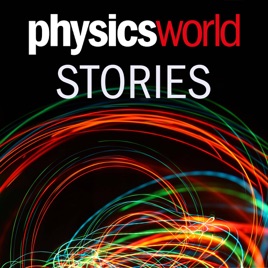
4.1
73
100
Physics World Stories Podcast
Physics World
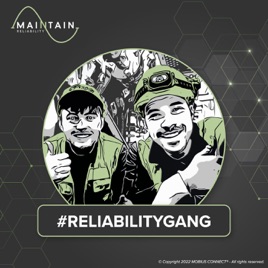
5
1
31
Reliability Gang Podcast
Will Bower & Will Crane

0
0
32
Quantum to Infinity
Aditya Iyer

4.7
15
147
Fire Science Show
Wojciech Wegrzynski

5
8
4
Nonlocal: a quantum computing podcast
Vincent Russo, William Slofstra, and Henry Yuen
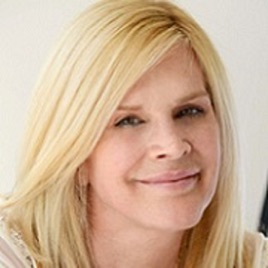
3.4
5
412
Medical Intuitive Miracle Show
KCAA Radio
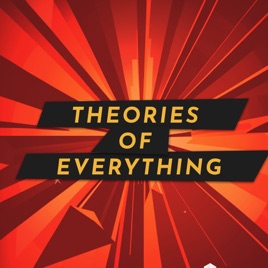
4.7
317
192
Theories of Everything with Curt Jaimungal
This is 42

4.8
74
248
Physical Attraction
PhysicsPodcast.com

4.5
63
194
icqpodcast's Amateur / Ham Radio Podcast
ICQ Podcast
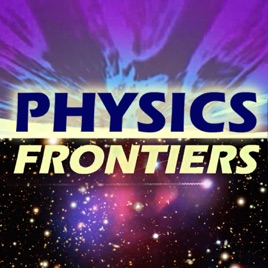
4.4
101
75
Physics Frontiers
Jim Rantschler



